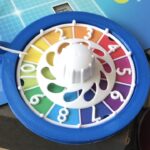In a recent session, I needed to determine when a pirate attack would strike Neverwinter. My players were busy preparing for the inevitable, and I wanted the attack to occur at the most narratively satisfying moment. Instead of planning it in advance, I tried something different: I used a D20 roll to guide the timing.
Each time the players completed a significant scene or preparation beat, I rolled the die. The result didn’t directly dictate the timing—there was no fixed DC or mechanical trigger. Instead, I looked at the number, felt its “vibe,” and decided if the attack should happen then or later. This approach tapped into a natural storytelling instinct, one we all possess even if it doesn’t always feel accessible. The dice became a tool for letting those latent storytelling skills rise to the surface.
Why This Works
- Humans Are Natural Storytellers
While we might not all feel like expert narrators, we’re inherently good at recognizing and creating satisfying story arcs. Rolling a die and interpreting its vibe gives you permission to lean into that intuition. Numbers on their own don’t tell a story, but your reaction to them—shaped by the context of your game—does.
- Building Tension with the Unknown
Rolling dice behind the screen has a psychological effect on players. It signals that something is in motion, even if they don’t know what. As you continue rolling, players feel the ticking of the clock. They start wondering, “Is it happening now? Are we ready?” This creates a shared anticipation, heightening the eventual payoff when the event finally unfolds.
- Flexibility and Pacing
The “vibe” approach allows you to adjust the pacing of your narrative in real-time. Whether a high roll is good for the players or the DM depends entirely on the context and your interpretation. This fluidity ensures upward and downward beats land when they feel most impactful, rather than being locked into a rigid preplanned schedule.
How to Use the Vibe Check
- Establish a Ticking Clock
Introduce a looming event or consequence. Let players know it’s on the horizon but not exactly when it will happen.
- Roll When It Feels Right
Between key moments—after a player’s brilliant plan, during a quiet lull, or just before a critical revelation—roll a D20 behind the screen. Look at the number and ask yourself: “Does this feel like the moment?”
- Interpret the Vibe
There’s no right or wrong way to read the roll. A low number might suggest the event is still brewing, while a high number could indicate it’s imminent—or vice versa. Trust your gut and the story you’re telling.
- Pay It Off When It Feels Right
Once the dice and your instincts align, let the event unfold. The timing will feel organic because you’ve been guiding it based on the rhythm of the story and the players’ actions.
Why the Vibe Check is Powerful
By rolling dice and interpreting the results, you create a dynamic blend of randomness and control. The dice provide an external prompt to guide your decision-making, but you remain the arbiter of when and how events occur. This method also keeps players on edge, reinforcing their investment in the narrative while maintaining an element of surprise.
In the end, the vibe check is more than just rolling a die—it’s about trusting yourself as a storyteller and leaning into the natural ebb and flow of your game. It’s a tool for creating moments that feel spontaneous, yet satisfyingly timed, allowing tension and release to land with maximum impact.








